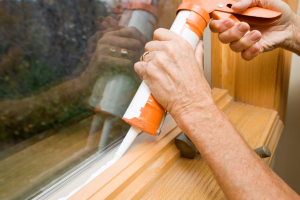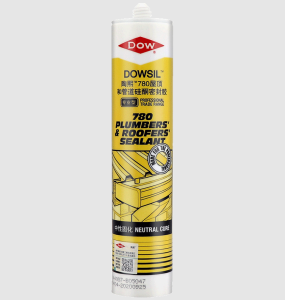Weather proofing sealants are essential components in protecting buildings and structures from the damaging effects of weather and moisture. They create a waterproof barrier, preventing water infiltration and reducing the risk of structural deterioration.
However, many individuals question the effectiveness of weather proofing sealants and wonder how to ensure their sealing is successful.
In this blog, we will delve into the world of weather proofing sealants, examine their efficacy, and provide valuable tips on how to guarantee their proper application.
Understanding Weather Proofing Sealants:
What are Weather Proofing Sealants?
Weather proofing sealants are specialized substances designed to create a protective barrier against weather-related elements, including rain, wind, snow, and ultraviolet (UV) rays. These sealants are commonly used in construction, ensuring longevity and structural integrity of buildings.
The Importance of Weather Proofing Sealants:
The primary purpose of weather proofing sealants is to prevent water from seeping into the vulnerable areas of a building. When water infiltrates through cracks and gaps, it can lead to rot, mold growth, and structural damage, compromising the safety of occupants and the building's overall performance.
How Weather Proofing Sealants Work?
Types of Weather Proofing Sealants:
There are various types of weather proofing sealants available, each catering to specific applications. They are:
- Acrylic sealers:
These are more flexible than other types of sealants and can be used on areas that require flexibility like windows and doors. They also have good water repellency, which makes them ideal for use in bathrooms and kitchens where there is lots of moisture.
- Silicone sealers:
Silicone sealers are highly durable and have good resistance to water. They are ideal for use in areas such as basements and crawl spaces where there is a lot of moisture.
Moreover, they are non-corrosive and can be used on a variety of surfaces such as concrete, brick, and stone.
For example, you can get DOWSIL™ SJ-169 Silicone WS Stone Sealant at Joinstar. This is a one-pack natural curing sealant for natural stone with good weatherproofing properties and will not tarnish.

- Polyurethane sealers:
These are among the most popular types of sealants because they provide excellent protection against water damage as well as UV rays making them ideal for outdoor use such as patios, walkways, or driveways.
If you want one-stop sourcing for these various kinds of sealants, Joinstar is a very trustworthy supplier. They not only cooperate with many famous international manufacturers, but also have a very professional team. This means that they can provide you with very specific and professional solutions to improve the efficiency of your project.
The Science Behind Weather Proofing Sealants:
Weather proofing sealants contain polymers and elastomers that form a flexible and impermeable seal when applied to surfaces. As the sealant cures, it adheres tightly to the substrate, creating a durable shield against water and weather elements. The flexibility of the sealant allows it to expand and contract with temperature changes, ensuring it maintains its integrity over time.
Assessing the Effectiveness of Weather Proofing Sealants:
Factors Affecting Sealant Performance:
Several factors can impact the effectiveness of weather proofing sealants, including surface preparation, application method, environmental conditions, and the quality of the sealant itself. Proper consideration of these factors is crucial to achieving optimal performance.
Laboratory Testing vs. Real-World Performance:
Weather proofing sealants undergo rigorous laboratory testing to assess their waterproofing capabilities and durability. While these tests provide valuable insights into a sealant's performance, real-world conditions can significantly differ from controlled laboratory settings.
External factors such as temperature fluctuations, UV exposure, and harsh weather conditions can influence how sealants behave over time.
Ensuring Successful Sealing with Weather Proofing Sealants:
The best way to ensure the success of a weather proofing sealant is to follow the manufacturer's instructions for application. These instructions will provide specific details about what types of surfaces are appropriate for sealing, as well as how much product should be used and how often it should be reapplied.
In some cases, homeowners may need to invest in an additional tool such as an electric sandblaster or power washer prior to application.
- Surface Preparation
Proper surface preparation is vital for achieving a successful weather proofing sealant application. Surfaces must be clean, dry, and free of dust, debris, and contaminants. Additionally, any existing cracks or gaps should be repaired before applying the sealant.
- Choosing the Right Weather Proofing Sealant
Selecting the appropriate type of weather proofing sealant for the specific application is crucial. Factors to consider include the substrate material, environmental conditions, and the desired level of flexibility and adhesion.
For different substrates, you will need a sealant with different properties. Find a supplier who can supply you various types and brands of weather proof sealants, which will save you time and cost to a greater extent, such as one of the best choices for one-stop purchasing: Joinstar.

- Correct Application Techniques
The correct application technique plays a significant role in the effectiveness of the sealant. Follow the manufacturer's instructions carefully and use the recommended tools for application, such as caulking guns or trowels. Properly fill gaps and ensure the sealant forms a continuous and uniform layer over the surface.
- Regular Maintenance and Inspection
Even with high-quality weather proofing sealants, regular maintenance and inspection are essential to prolong their lifespan. Inspect the sealed areas periodically for signs of wear, damage, or cracking. Promptly address any issues to prevent water infiltration and avoid costly repairs in the future.
Final words:
In conclusion, weather proofing sealants are indeed effective in protecting buildings and structures from weather-related damage. Understanding the different types of sealants, their working principles, and factors affecting their performance is crucial for successful sealing.
By prioritizing proper surface preparation, choosing the right sealant, using correct application techniques, and conducting regular maintenance, you can ensure the longevity and efficiency of weather proofing sealants in safeguarding your property against the elements.
Weather proofing sealants are a valuable investment, providing peace of mind and protecting your investment for years to come.





